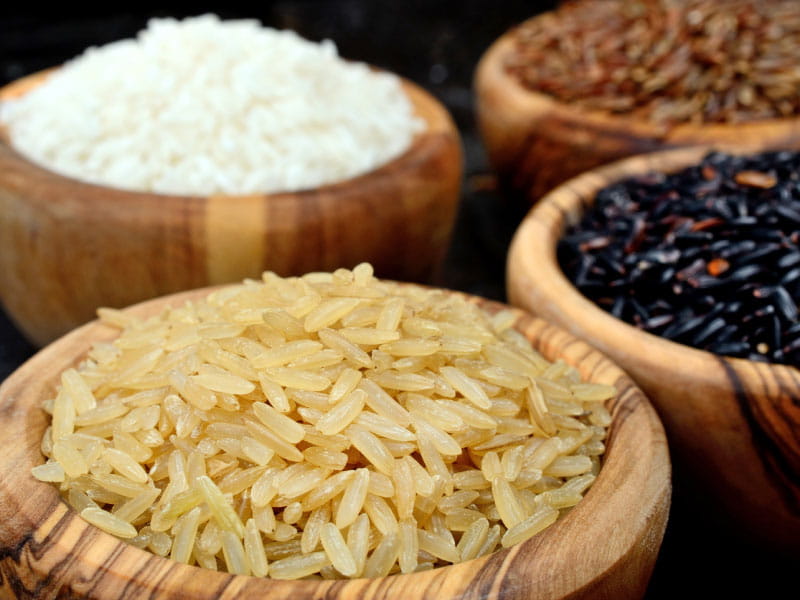Rounding up healthy rice choices
By Vanessa Caceres, American Heart Association News

Believe it or not, there are thousands of varieties of rice, with colors ranging from black to purple to red and more.
Of course, the type of rice most of us know best is white rice. You may have heard some people say rice isn't nutritious or it will lead you to gain weight. But is this inexpensive food that's a staple for more than half the globe's population all that bad?
To get a closer look at the rice health debate, let's start with varieties and colors. The texture, flavor and nutrition of each type of rice is a little different.
Rice is classified as short, medium or long grain. Short-grain rice is the type used in sushi and has a chewy texture. Medium-grain rice like arborio and valencia tends to be more tender and will stick together more easily than long-grain rice. Long-grain varieties like basmati, brown and jasmine rice tend to stay separate and will be fluffy after you cook them.
Then there are the different colors, with white and brown rice the most common in the U.S. Brown rice is considered a whole grain because it has three grain components: the bran, endosperm and germ, said Nikki Nies, a dietitian for the Northwest Independent School District in Justin, Texas. In contrast, white rice is stripped of its bran and germ, leaving the less healthy endosperm.
Whole grains like brown rice are healthier than processed grains. They contain more fiber, which helps you to feel full faster and keeps your digestive system running well. In fact, federal dietary guidelines recommend eating at least 3 ounces of whole grains a day.
One cup of cooked long-grain brown rice has more than 3 grams of fiber versus less than 1 gram from one cup of cooked long-grain white rice. Adults should aim for 22 to 34 grams of fiber a day depending on their age and sex.
Brown rice also is richer in nutrients like magnesium and B vitamins compared with white rice, Nies said. When comparing calories per cup of cooked rice, brown is slightly higher at 248 calories versus 205 for white.
Other less common types of rice, such as red and black, tend to have similar amounts of fiber as brown rice, Nies said. But each variety contains different amounts of nutrients. Black rice, for example, is rich in a type of antioxidant called anthocyanin. Anthocyanin may improve cardiovascular health, according to research published in the journal Molecules in 2020.
Because rice is high in carbohydrates, Nies said people with diabetes may have to limit rice consumption or eat lower-carb varieties such as wild rice.
In terms of weight, a 2016 study in Nutrition Journal found eating more whole grains, such as brown rice, was associated with a healthier body weight in children and adults.
But white rice can still be part of a healthy diet.
"When white rice is paired with a lean protein source, vegetables and healthy fats, the differences between brown and white rice are negligible," Nies said. So don't feel guilty about choosing it as the base for a rice bowl as long as you choose a lean protein like chicken, fresh vegetables and a healthy fat like avocado.
Plus, she said, white rice is typically enriched with nutrients like B vitamins and iron.
One well-known caution about rice is its level of arsenic, a toxic environmental pollutant found in soil and groundwater. Rice plants readily absorb arsenic, but cooking rice like pasta – with lots of extra water and then draining off the water – will reduce those levels by up to 60%, according to the Food and Drug Administration. But people who eat a varied diet don't need to worry about arsenic in rice, Nies said.
She recommended enjoying rice up to a couple of times a week, with whole grains like barley, quinoa and buckwheat accompanying other meals throughout the week.
And feel free to experiment, Nies said. "There's no need to stick with a particular type (of rice) as each one offers different nutrients and benefits."
If you have questions or comments about this story, please email [email protected].





